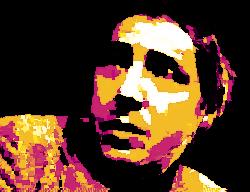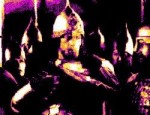Biography: life and films

Arnaud Desplechin was born on 31st October 1960, at Roubaix in France. Having long nurtured an ambition to make films, he took a course on cinema at university in Paris before enrolling in the elite film school IDHEC to study film direction and photography. It was here that he met some of his future collaborators, including Eric Rochant, Pascale Ferran and Noémie Lvovsky. Immediately after his graduation in 1984, Desplechin found work as a cinematographer on some short films by Eric Rochant and Nico Papatakis. He then contributed to the screenplay on Rochant's debut feature Un Monde sans pitié (1989).
It was in 1990 that Desplechin made his first film, a remarkable moyen-métrage entitled La Vie des morts. This brought together several actors who would feature prominently in his subsequent films, notably Marianne Denicourt, Emmanuelle Devos and Emmanuel Salinger. The film was first screened at the Angers European Film Festival in 1991, where it won two awards, including the SACD Grand Prize. It also took the Jean Vigo Short Film Prize the same year.
Pascal Caucheteux's newly created company Why Not Productions provided the finance for Desplechin's first full-length film, La Sentinelle (1992). Desplechin reassembled most of his team from his previous film, but with one notable addition, Mathieu Amalric, in a supporting role. A sombre and deeply unsettling thriller, the film won a César for its lead actor, Emmanuel Salinger, and was nominated for the 1992 Palme d'Or at Cannes. Widely praised by the critics, Desplechin immediately acquired the reputation of a bona fide auteur filmmaker. After this auspicious beginning, Desplechin received even greater acclaim for his second feature, Comment je me suis dispute (ma vie sexuelle) (1996), the film that catapulted its lead actor Mathieu Amalric to stardom and won him his first César. The film was also nominated for the top prize at Cannes and established Desplechin's international reputation.
Desplechin's third film Esther Kahn (2000) was to be one of his most challenging, an ambitious historical drama based on a novella by the English author Arthur Symons. The director's first English language film, Esther Kahn had a prestigious cast (it starred Summer Phoenix and Ian Holm), and was generally well-received by the French critics, partly as it was perceived as a homage to the French New Wave (in particular, the films of François Truffaut). This was followed by En jouant Dans la compagnie des hommes (2003), an experimental semi-documentary film which explores the conflict between artistic endeavour and big business, in a style that is slightly reminiscent of Jean-Luc Godard's films of the 1980s. Combining scenes from the final film with an amateur recording of its rehearsals, the film was originally conceived as a diptych but Desplechin abandoned the idea after he had screened a preliminary version at Cannes in 2003. The film starred Sami Bouajila and explores themes of identity and generational conflict, cleverly combining Edward Bond's play In the Company of Men with Shakespeare's Hamlet.
Desplechin's next film, Rois et Reine (2004), was to be one of his most acclaimed. The film interweaves two sharply contrasting storylines, one tragic, the other comical, featuring Mathieu Amalric as an eccentric musician and Emmanuelle Devos as an ambitious career woman. Not only did the film do well at the box office, it was a major critical success, both in France and abroad. It was nominated for seven Césars, but won only one award, in the Best Actor category (for Amalric). It was also nominated for the Gold Lion Award at the Venice Film Festival and won the prestigious Prix Louis Delluc in 2004. When the film came out, Desplechin was attacked by his former lover Marianne Denicourt for having (allegedly) incorporated details from her private life in the film. Having aired her grievance in the press, Denicourt later took out a lawsuit against Desplechin demanding financial compensation, but was unsuccessful.
For his next film, Arnaud Desplechin was on much safer ground. L'Aimée (2007) (a.k.a. The Beloved) is an intimate documentary in which the director evokes precious family memories by filming his father, his brother and his nephews at their family home in Roubaix the day before it was sold. Desplechin's next film Un Conte de Noël (a.k.a. A Christmas Tale) (2008) stays with the linked themes of family and nostalgia and depicts a far less harmonious family reunion. Boasting a star-studded cast that includes Catherine Deneuve, Mathieu Amalric and Emmanuelle Devos, the film was another major critical success. It was nominated for a Palme d'Or at Cannes and also for nine Césars, winning only the César for Best Supporting Actor (Jean-Paul Roussillon). Un Conte de Noël is Desplechin's most accessible film to date, but it is as nuanced and technically accomplished as any of his previous works. After this criticial triumph, Desplechin's reputation as one of France's leading auteur filmmakers looks pretty unassailable.
© James Travers 2012
The above content is owned by frenchfilms.org and must not be copied.
Filmography
Click here to view complete list of films...The very best of French film comedy

The very best period film dramas

The very best of German cinema
